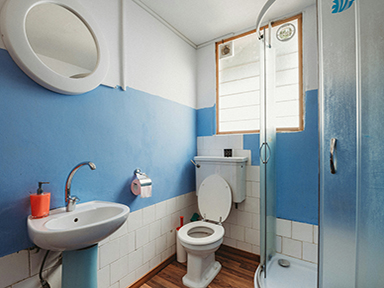Changes to residential tenancy legislation in the last couple of years have seen renting with pets become easier. Worried about the impact this might have on your rental? We explain how landlords can protect their investment property from damage…
There is little doubt that Australia is a nation of pet lovers. According to Animal Medicines Australia, 69 per cent of households are home to one or more pets – that’s an estimated 28.7 million pets in around 6.9 million homes.
Until recently, finding a rental that would allow pets was a challenge...
Pet legislation in your state
In June 2024, Tasmania became the latest jurisdiction to look at making renting with pets easier. The proposed change to the state’s tenancy legislation was announced just ahead of new laws coming into effect in WA (as of 29 July 2024) and SA (as of 1 July 2024) which means a tenant’s request to have a pet cannot be refused without good reason. Over the last couple of years, ‘no pets allowed’ ceased to be the default position in Queensland (as of October 2022), the NT (as of January 2021), Victoria (as of March 2021), and in the ACT (as of November 2019).
Tenants still need to seek landlord permission to keep a pet at the rental (with exceptions in most states and territories for assistance animals), but the landlord cannot unreasonably refuse the request. It is only landlords in NSW who can currently refuse a pet without reason or have a ‘no pets’ clause in the rental agreement.
Grounds for refusal
The reasons for being able to refuse a request vary by state and territory but generally involve situations where allowing the pet would not be appropriate. For example, if:
-
the property is not suitable for a pet, taking into account the character and nature of the premises;
-
the property lacks suitable space, fencing or another item necessary to humanely accommodate the pet;
-
keeping the pet will exceed a reasonable number of animals being kept on the premises;
-
the animal presents a public safety risk (e.g. is venomous);
-
the pet is considered restricted or prohibited; or
-
keeping the pet will contravene a law, a by-law or rule applying to the premises (such as strata by-laws).
Tenants rejoice – but what about landlords?
‘Pets allowed’ is a welcome development for many tenants who previously found securing a pet-friendly rental difficult. However, the change in tenancy legislation in favour of allowing pets has made some landlords nervous about the potential fall-out of having furry tenants in their investment property. Chief among the worries are damage, odours and allergens. Four-legged housemates might dig up the garden, scratch the doors and tear flyscreens and window coverings, have ‘little accidents’ on carpets, moult or get fleas that invade the premises.
What happens if any of these should eventuate? In most cases the tenant fixes the problem. On rare occasions they may not. That is when having a landlord insurance policy with effective pet damage cover is invaluable.
How insurance steps in
When it comes to damage at a rental caused by the tenant’s pet, it is the tenant’s responsibility to repair or replace the damaged item. Should the tenant fail to make good on their obligation, the landlord may look to their insurance.
Not all landlord insurance providers offer cover for damage caused by domestic pets, in fact, EBM RentCover is one of few that do. We provide up to $70,000 cover in our RentCover Ultra and Platinum policies and do not impose any onerous conditions on cover (such as naming the pet on the lease or requiring additional inspections).
EBM RentCover has automatically provided pet damage cover for policyholders since 2017. Despite worries from landlords, it has been our experience that two-legged tenants cause far more damage than any four-legged family member. In FY24 (by which time half of all jurisdictions had changed the law to make renting with pets easier), we settled fewer than 70 claims for pet damage with a value of around $250,000. By comparison, there were more than 1,800 claims which included accidental or malicious damage, with a total value of more than $18 million.
Protecting rentals from pet damage
In most of the new tenancy legislation, there are provisions for landlords to impose some conditions on allowing a pet in the rental (refer to the relevant law or tenancy agency in your jurisdiction for details). These may include requiring:
-
the pet to be kept outside;
-
carpets to be professionally cleaned at the end of the tenancy (if a pet is allowed inside the premises);
-
premises to be fumigated at the end of the tenancy (if a pet is allowed inside the premises); or
-
a pet bond to be paid (note: WA is the only jurisdiction where this is legal).
Landlords may also like to consider ways they can help protect their investment and make their rental more pet friendly. Considerations include:
-
installing more pet-friendly flooring such as tiles or linoleum;
-
installing window treatments which are less likely to be clawed or chewed;
-
installing quality doors which are more resistant to scratches;
-
installing a doggie-door or cat-flap to reduce the potential for pets to scratch at doors or windows to get in and out;
-
using easy-clean paint;
-
choosing pet-friendly fabrics (if the rental is furnished) which are durable, stain-resistant and easy to clean;
-
improving ventilation to reduce the risk of odours lingering;
-
avoiding planting toxic species in gardens; and
-
not installing easily damaged outdoor items like water features.
To summarise
With appropriate landlord insurance in place, property investors may feel less worried about the potential impact of allowing pets in their rental. Check your policy to see if pet damage is covered and be sure to understand any conditions, restrictions, inclusions or exclusions as not all landlord insurance policies offer the same level of cover.
If you have any questions about pet damage cover, please get in touch with a member of EBM RentCover’s Expert Care team – 1800 661 662.
*While we have taken care to ensure the information above is true and correct at the time of publication, changes in circumstances and legislation after the displayed date may impact the accuracy of this article. If you need us we are here, contact 1800 661 662 if you have any questions.
You may also like
View all
NSW is set to become the next state to introduce changes to pet legislation, shifting the landscape for renters and landlords alike...

Want some safety tips at rentals? Read this...

Legislation goes deep into the minimum standards of rental properties and landlords and agents must adhere to them…



